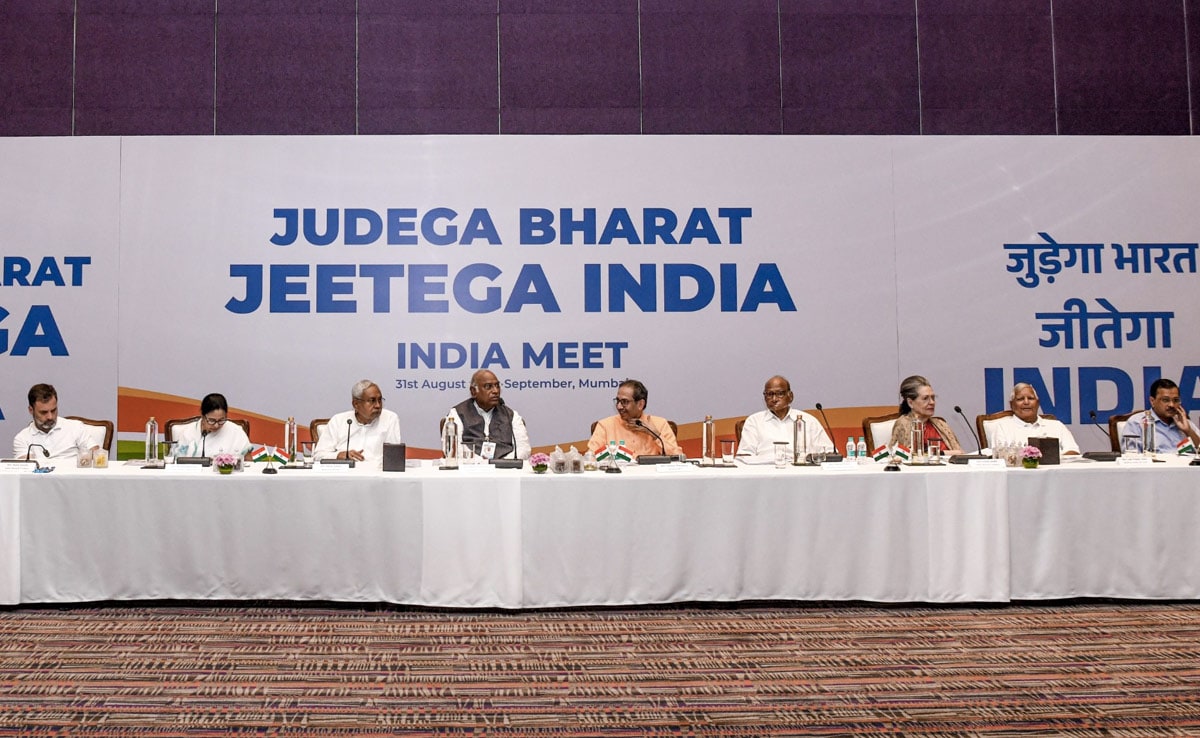
Sources say the bill will be introduced in the Lok Sabha soon. (file)
New Delhi:
The history of the women’s reservation bill which guarantees a 33 per cent quota for women in Lok Sabha and state assemblies, reportedly approved by the union cabinet last evening, highlights the fissures within the INDIA alliance of opposition parties. Sources say the bill will be introduced in the Lok Sabha during the special session of the parliament that began yesterday, and the ruling BJP has asked its women MPs to be present in the house when it is taken up for consideration and put to a vote.
While Congress and left parties support the bill, prominent constituents like Lalu Yadav’s RJD, and Akhilesh Yadav’s Samajwadi Party have always been opposed to it in its current form. They have fiercely opposed the bill, demanding a quota for women from backward classes within the 33 per cent quota.
Nitish Kumar’s JD(U), which opposed the bill earlier, came around and supported it in 2010, threatening a split in the party with Mr Kumar at loggerheads with then party president Sharad Yadav. JD(U) had joined Congress and several other regional parties in demanding that the PM introduce it in the special session.
In 2010, when the Rajya Sabha passed the bill, these opposition parties stalled it in the Lok Sabha. SP and RJD even withdrew support from the ruling UPA government over the bill. With seat-sharing already turning out to be a big headache for the INDIA bloc, differences over the women’s reservation bill will further test opposition unity ahead of the 2024 Lok Sabha polls.
Congress’ parliamentary party chief Sonia Gandhi on Tuesday said the women’s reservation bill “is ours”. “It is ours, apna hai,” she said when asked about it while entering the parliament today.
Introduced by the HD Deve Gowda-led government 27 years ago, the bill will be introduced in the parliament for the fifth time.
This is the fifth occasion in last 27 years when a bill to give reservation to women in Parliament and State Legislatures will be brought before the Parliament. It was first taken up by Parliament for deliberation through the introduction of the Constitution (81st Amendment) Bill, 1996 in the 11th Lok Sabha on September 12, 1996. It was then referred to the Joint Committee of the two Houses of parliament.
The Committee presented its report to the Lok Sabha on December 9, 1996, but the bill lapsed with the dissolution of the 11th Lok Sabha.
A similar bill, namely, Constitution (84th Amendment) Bill, 1998 was then introduced in the next term of the Lok Sabha, which also lapsed with dissolution of that House.
Again, another Bill, Constitution (85th Amendment) Bill, 1999, prepared on the lines of the earlier bills and introduced in the 13th Lok Sabha on December 23, 1999 could not be considered due to lack of political consensus. The bill once again lapsed on dissolution of that House.
The Constitution (108th Amendment) Bill, 2008 was passed by Rajya Sabha on March 9, 2010. When the upper house passed the bill, marshals had to escort out some MPs who opposed the move. It has been on freeze ever since, as it was never presented in the lower house.
Bills introduced or passed in the Rajya Sabha do not lapse, hence the Women’s Reservation Bill is still active.
It proposes that one-third of the seats reserved for Scheduled Castes and Scheduled Tribes will be reserved for women from those groups. These reserved seats may be allotted by rotation to different constituencies in the state or union territory.
Congress chief Mallikarjun Kharge, speaking at the discussion on ‘Parliamentary Journey of 75 years Starting from Samvidhan Sabha – Achievements, Experiences, Memories And Learnings”, on the first day of the special session of the parliament yesterday, pointed to the skewed gender ratio, saying parliament has only 14 per cent women, and their percentage in legislative assemblies is just 10.
In the present Lok Sabha, 78 women members were elected which account for less than 15 per cent of the total strength of 543. In Rajya Sabha too, women’s representation is about 14 per cent, according to the data shared by the government with parliament last December.
State assemblies, too, have less than 12 per cent women members. Several of them have less than 10 per cent women.
Congress’s communications in-charge Jairam Ramesh yesterday pointed out that it has been a long-standing demand of the Congress party to implement women’s reservation.
“We welcome the reported decision of the Union Cabinet and await the details of the Bill. This could have very well been discussed in the all-party meeting before the Special Session, and consensus could have been built instead of operating under a veil of secrecy,” he posted on X.

